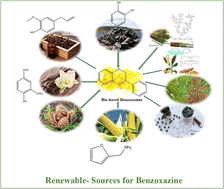Recent advances in bio-based polybenzoxazines as an interesting adhesive coating
Abstract
Polybenzoxazine (PBz) is an excellent and highly intriguing resin for various sophisticated uses. Benzoxazines have piqued the curiosity of academics worldwide because of their peculiar properties. Nonetheless, most benzoxazine resin manufacturing and processing methods, notably bisphenol A-based benzoxazine, rely on petroleum resources. Because of the environmental consequences, bio-based benzoxazines are being researched as alternatives to petroleum-based benzoxazines. As a result of the environmental implications, bio-based benzoxazines are being developed to replace petroleum-based benzoxazines, and they are gaining traction. Bio-based polybenzoxazine, epoxy, and polysiloxane-based resins have piqued the interest of researchers in coatings, adhesives, and flame-retardant thermosets in recent years due to their anticorrosion, ecologically friendly, affordable, and low water absorption properties. As a result, numerous scientific studies and patents on polybenzoxazine continues to rise in polymer research. Based on its mechanical, thermal, and chemical characteristics, bio-based polybenzoxazine has several applications, including coatings (anticorrosion and antifouling), adhesives (highly crosslinked network, outstanding mechanical and thermal capabilities), and flame retardants (with the high charring capability). This review reports an overview of polybenzoxazine, highlighting the current advances and progress in synthesizing bio-based polybenzoxazine, their properties, and their use in coating applications.

- This article is part of the themed collection: 2023 Reviews in RSC Advances


 Please wait while we load your content...
Please wait while we load your content...